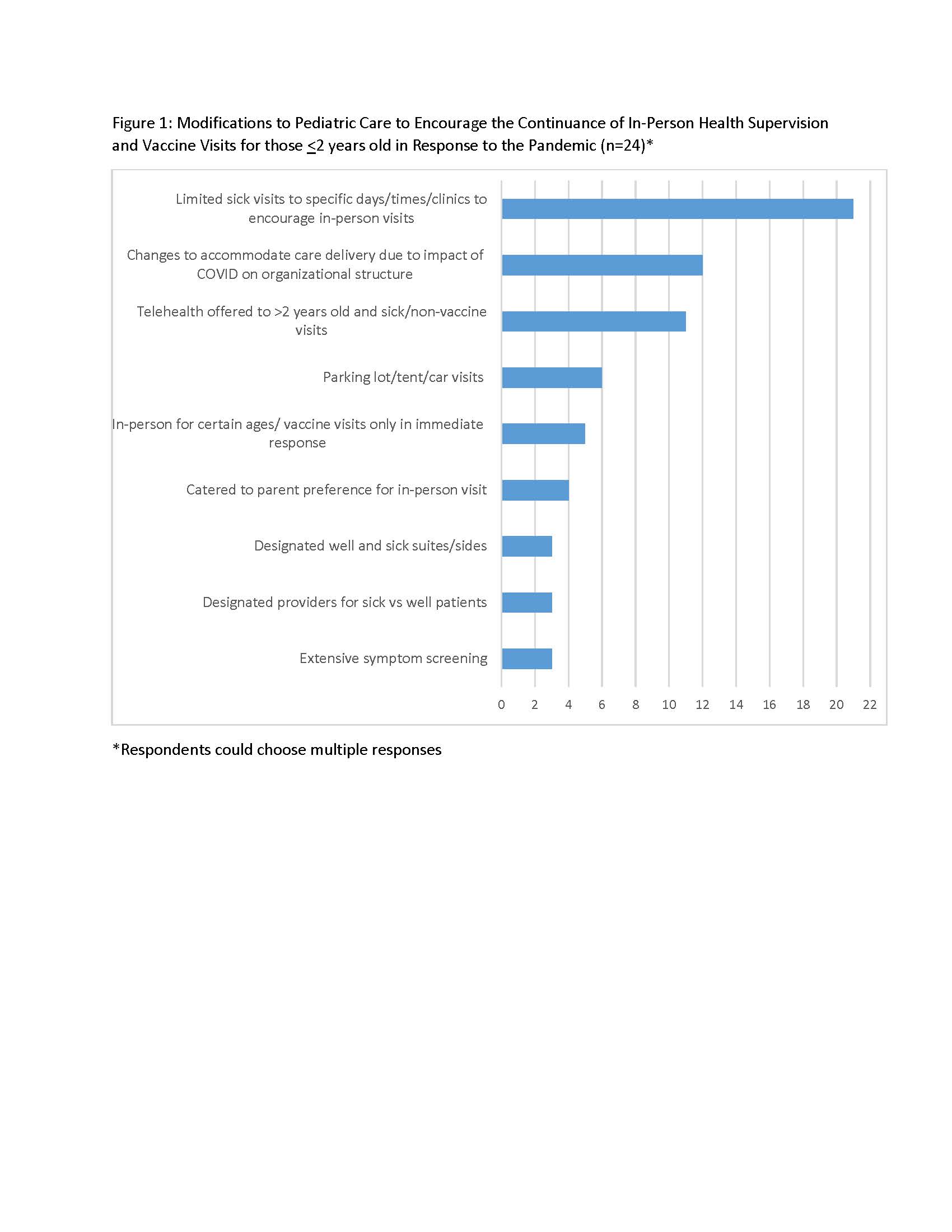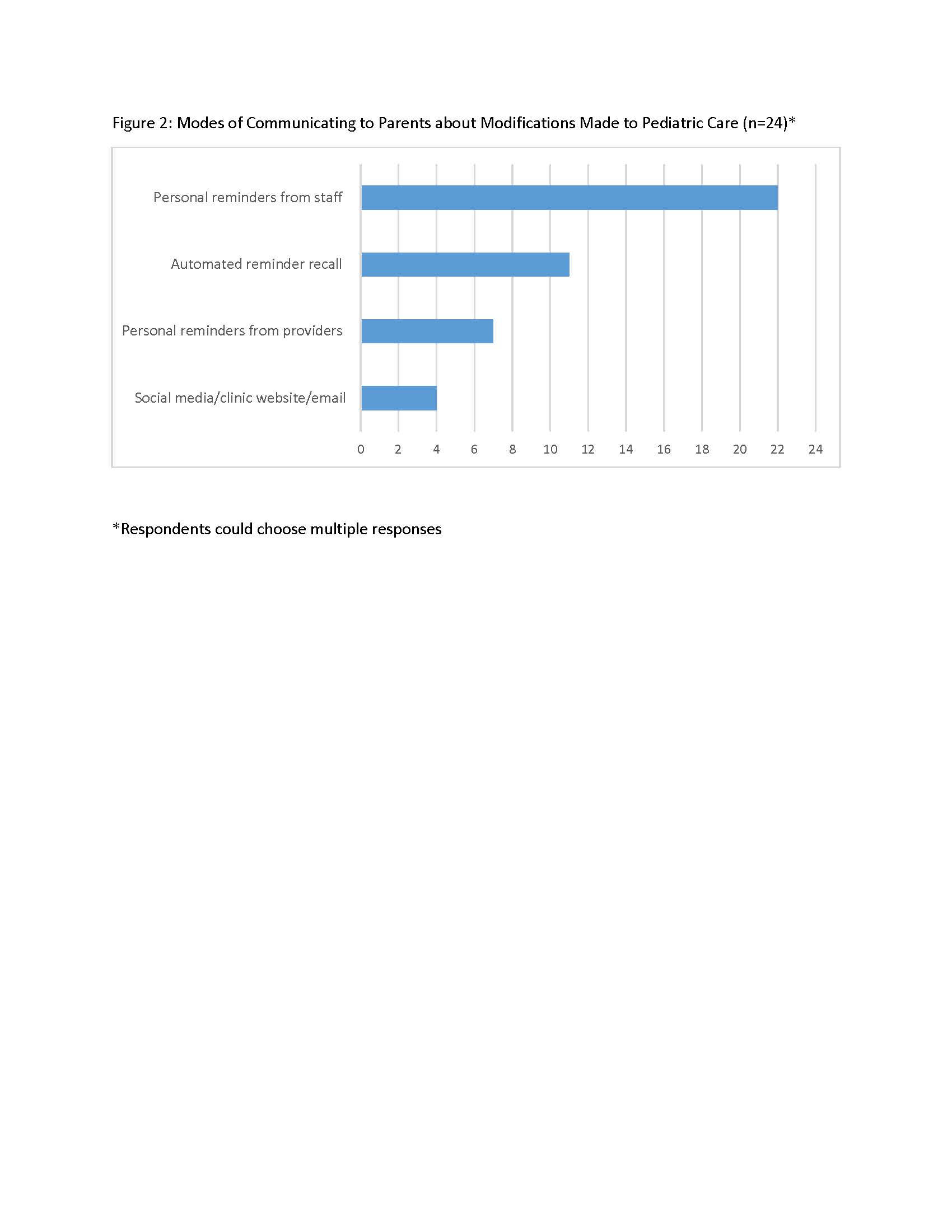General Pediatrics: All Areas
Category: Abstract Submission
General Pediatrics I
600 - What Changes Did Pediatric Providers Make to Health Supervision for Children Two and Younger in Response to the SARS-CoV-2 Pandemic?
Saturday, April 23, 2022
3:30 PM - 6:00 PM US MT
Poster Number: 600
Publication Number: 600.208
Publication Number: 600.208
Christine Spina, University of Colorado School of Medicine, Aurora, CO, United States; Cathryn Perreira, University of Colorado, Anschutz - ACCORDS, Aurora, CO, United States; Heather Spielvogle, Seattle Children's, Seattle, WA, United States; Amanda Dempsey, University of Colorado, Aurora, CO, United States; Jeffrey Robinson, Portland State University, Portland, OR, United States; Nicolas Dundas, Seattle Children's, Seattle, WA, United States; Doug Opel, University of Washington School of Medicine, Seattle, WA, United States; Sean T. O'Leary, University of Colorado School of Medicine, Denver, CO, United States

Christine Spina, MSPH
Research Services Principal Professional – Project Manager
University of Colorado School of Medicine
Aurora, Colorado, United States
Presenting Author(s)
Background: In response to public health measures to reduce SARS-CoV-2 transmission and conserve health care resources, pediatric providers faced many challenges to delivering routine care. Of particular importance was the disruption in delivering care to children < 2 years old given the numerous developmental milestones and recommended vaccine doses during this age. It is unclear how pediatric providers adapted their clinics and workflow to avoid health care delivery disruptions.
Objective: To describe pediatric clinics’ health care delivery modifications for children < 2 years old in response to the onset of the SARS-CoV-2 pandemic.
Design/Methods: An electronic survey was administered to a clinic leader at 24 pediatric primary care clinics across Washington and Colorado participating in a larger trial from May to August 2020. The survey focused on the onset of the pandemic’s impact on delivery of health supervision to children < 2 years old. Changes made to health supervision generally, vaccines specifically, and modifications to encourage the continuation of in-person health supervision were queried. We also gathered data on communication methods to notify parents of modifications. We utilized closed-ended questions with yes/no responses, followed by a restricted list of answers for those who answered yes and included a free text option.
Results: All 24 clinics (100%) reported implementing changes to health supervision visits to continue in-person care for patients < 2 years old (Fig 1). The most common modifications included separating sick and well child appointments to specific days, times, and/or clinics sites (88%). Several clinics (50%) made accommodations (e.g., designated sick or well providers/suites/clinic sites) due to organizational changes brought about by COVID impacts (e.g., decreased patient volume causing clinic closures, providers taking leave of absence, and social distancing mandates). Many clinics also offered telehealth visits for older children and non-vaccine visits to preserve in-person care for those < 2 years old (46%). All 24 clinics informed families of modifications to encourage a return to in-person care, most commonly through personal reminders from staff (n=22) (Fig 2).Conclusion(s): In response to the onset of the SARS-CoV-2 pandemic, pediatric providers made a variety of modifications to continue delivering health supervision to children < 2 years old.
Figure 1: Modifications to Pediatric Care to Encourage the Continuance of In-Person Health Supervision and Vaccine Visits for those < 2 years old in Response to the Pandemic (n=24)* *Respondents could choose multiple responses
*Respondents could choose multiple responses
Figure 2: Modes of Communicating to Parents about Modifications Made to Pediatric Care (n=24)* *Respondents could choose multiple responses
*Respondents could choose multiple responses
Objective: To describe pediatric clinics’ health care delivery modifications for children < 2 years old in response to the onset of the SARS-CoV-2 pandemic.
Design/Methods: An electronic survey was administered to a clinic leader at 24 pediatric primary care clinics across Washington and Colorado participating in a larger trial from May to August 2020. The survey focused on the onset of the pandemic’s impact on delivery of health supervision to children < 2 years old. Changes made to health supervision generally, vaccines specifically, and modifications to encourage the continuation of in-person health supervision were queried. We also gathered data on communication methods to notify parents of modifications. We utilized closed-ended questions with yes/no responses, followed by a restricted list of answers for those who answered yes and included a free text option.
Results: All 24 clinics (100%) reported implementing changes to health supervision visits to continue in-person care for patients < 2 years old (Fig 1). The most common modifications included separating sick and well child appointments to specific days, times, and/or clinics sites (88%). Several clinics (50%) made accommodations (e.g., designated sick or well providers/suites/clinic sites) due to organizational changes brought about by COVID impacts (e.g., decreased patient volume causing clinic closures, providers taking leave of absence, and social distancing mandates). Many clinics also offered telehealth visits for older children and non-vaccine visits to preserve in-person care for those < 2 years old (46%). All 24 clinics informed families of modifications to encourage a return to in-person care, most commonly through personal reminders from staff (n=22) (Fig 2).Conclusion(s): In response to the onset of the SARS-CoV-2 pandemic, pediatric providers made a variety of modifications to continue delivering health supervision to children < 2 years old.
Figure 1: Modifications to Pediatric Care to Encourage the Continuance of In-Person Health Supervision and Vaccine Visits for those < 2 years old in Response to the Pandemic (n=24)*
 *Respondents could choose multiple responses
*Respondents could choose multiple responsesFigure 2: Modes of Communicating to Parents about Modifications Made to Pediatric Care (n=24)*
 *Respondents could choose multiple responses
*Respondents could choose multiple responses